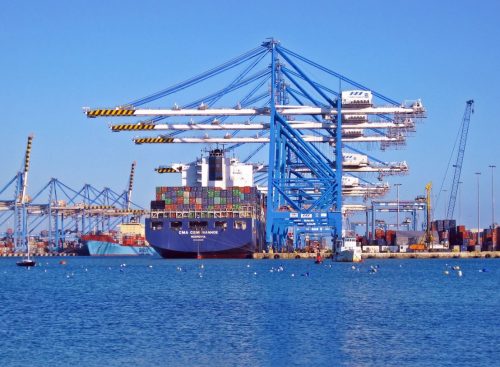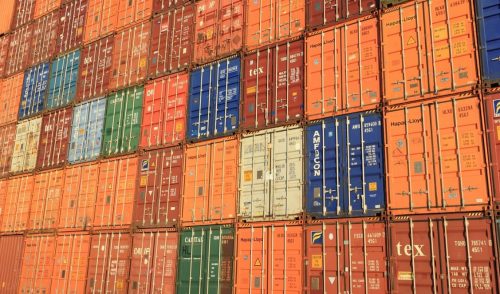The globe’s struggling shipping industry is unlikely to be reaching calmer waters just yet. That is if trends in the container shipping segment are anything to go by, says the world’s biggest credit insurer.
According to Euler Hermes, an Allianz-backed company, insolvencies in the container segment during January-May this year are more than 10 percent higher than for the same time last year. The consolidation is likely to continue as firms count on riding out the storm through mergers and alliances.
They say shipping companies are currently facing persistent high risks, overcapacity, weakening global trade, and recession in many countries.
 Consolidation in the shipping industry is likely to continue as firms count on riding out the storm through mergers and alliances, the world’s largest credit insurer suggests.
Consolidation in the shipping industry is likely to continue as firms count on riding out the storm through mergers and alliances, the world’s largest credit insurer suggests.
Ludovic Subran, chief economist at Euler Hermes, remarks:
“Maritime shipping is the backbone of global trade. Some 80 percent of the global trade volume and 70 percent of the value of traded goods go by ship.”
“For many years,” he adds, “the industry benefited from growth in the container shipping segment and ever-larger container ships, despite the 7-year shipping industry crisis. The positive trend was supported by low oil prices.”
However, supply and demand are steadily diverging as capacity outstrips the slowing pace of global trade.
Container shipping facing its biggest crisis
Subran says the container shipping industry is now confronting its biggest crisis: “Shipping a container on the Asian route today costs about half as much as just 4 years ago.”
The result is many companies are getting stressed, especially if they have used up their buffers to weather the persistent crisis, he adds.
Euler Hermes note that the global economy is expected to rise by only 2.4 percent this year, with a modest rise to 2.7 percent in 2017. That will mean 6 years of growth staying under 3 percent – which is well under the 4 percent annual average growth rate of 2004-2007.
Moreover, the US dollar value of global trade is expected to shrink another 2 percent in 2016, following a 10 percent contraction in 2015.
The costs saving from reduced oil prices have not always been enough to offset these low rates. The shipping industry will thus continue to face high risks, and further insolvencies in some specific segments, Euler Hermes suggest.
Some problems are self-inflicted
While some of the problems are not of its making, Subran suggests the industry has inflicted some harm on itself. It kept building bigger and bigger ships as global trade was slowing.
“This boom in new construction overtook the industry,” Subran explains, “with mega container ships launching one after another – and more will be delivered this year.”
 Large container shipping firms are trying to ride out the storm by merging and forming alliances.
Large container shipping firms are trying to ride out the storm by merging and forming alliances.
Overcapacity has been building up for years, he adds, and freight rates are now plummeting. Meanwhile, this is happening against a backdrop contraction in global trade and a slowing of the Chinese economy – which has a huge impact on shipping.
Economic slowdown is also happening in other Asian countries, coupled with recession in Russia, Brazil, and other countries in South America.
Ron van het Hof, CEO of Euler Hermes Germany, Austria, and Switzerland, says the large container shipping firms are trying to ride out these problems by joining forces through alliances and mergers.
This way they can use capacity more effectively, strengthen their market power, cut costs, and hopefully secure profits. However, he predicts that despite these measures, some will incur heavy losses.
Decommissioning ships
One way shipping firms are addressing overcapacity is by decommissioning ships. But while this can save costs like fuel, it increases other costs such as maintenance, and any future recommissioning will be particularly costly.
“The recommissioning of mothballed ships is very expensive, so it doubles the pain for shipping companies,” says van het Hof.
He says the consolidation phase is not yet over. One of the effects – as more mergers and alliances form – is that chartered vessels revert to their owners. This releases a chain reaction that will hit smaller shipping companies hard.
“Charter companies with only a few ships and lacking their own services or access to freight are suffering,” says van het Hof.
Safety is also a concern, especially when ships are recommissioned, according to a Marine Safety study by experts at Allianz Global Corporate & Specialty (AGCS). They warn of the dangers of deferring investment in safety until things pick up.
However, they say signs of this happening are already starting to show in the stretching of maintenance schedules and decommissioning of ships.
Van het Hof says some companies – such as in Germany – are addressing overcapacity and not ordering new ships. While this is bad news for shipbuilders, it raises the hope that capacity and global demand may once again move forward on an equal footing. However, until then, it is likely that the shipping industry will see more companies go under.
“Financial strength and related endurance will be the decisive factors in navigating this storm and staying the course despite some losses,” he concludes.

